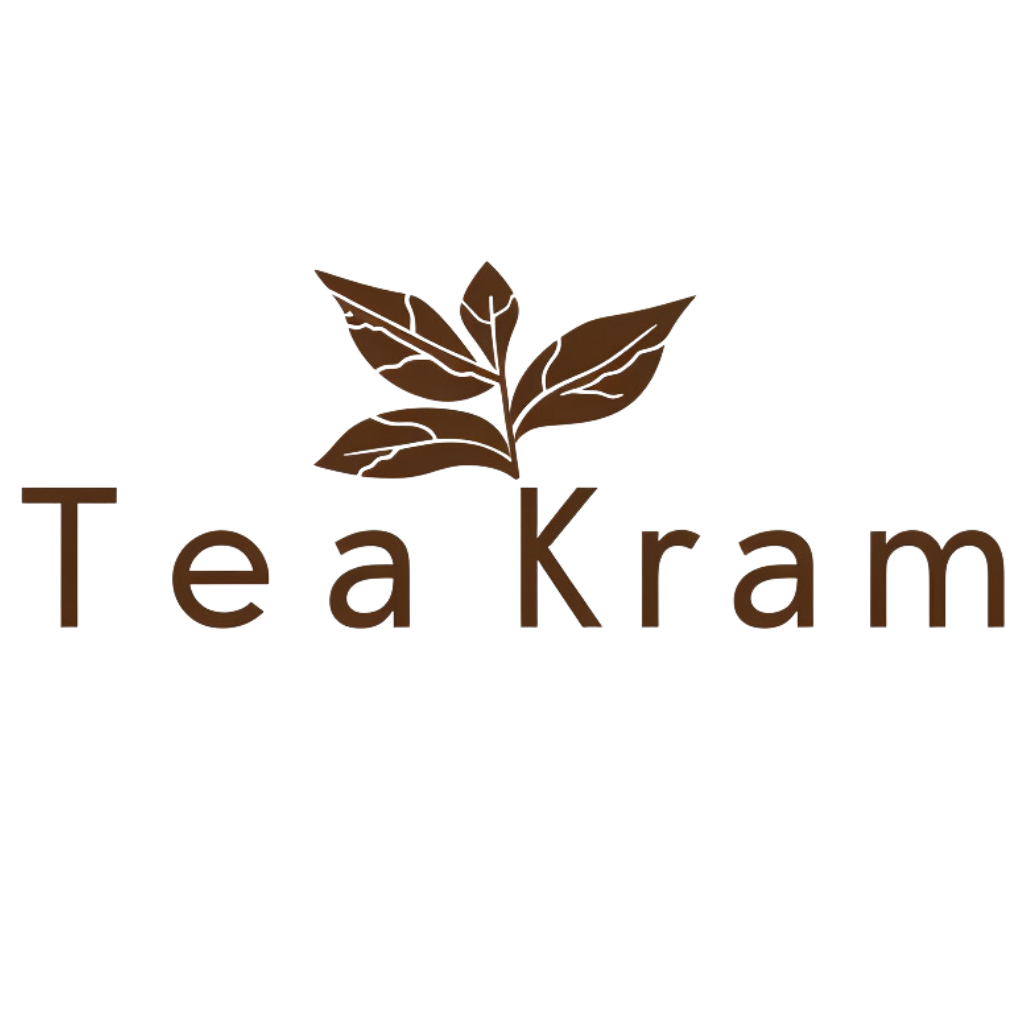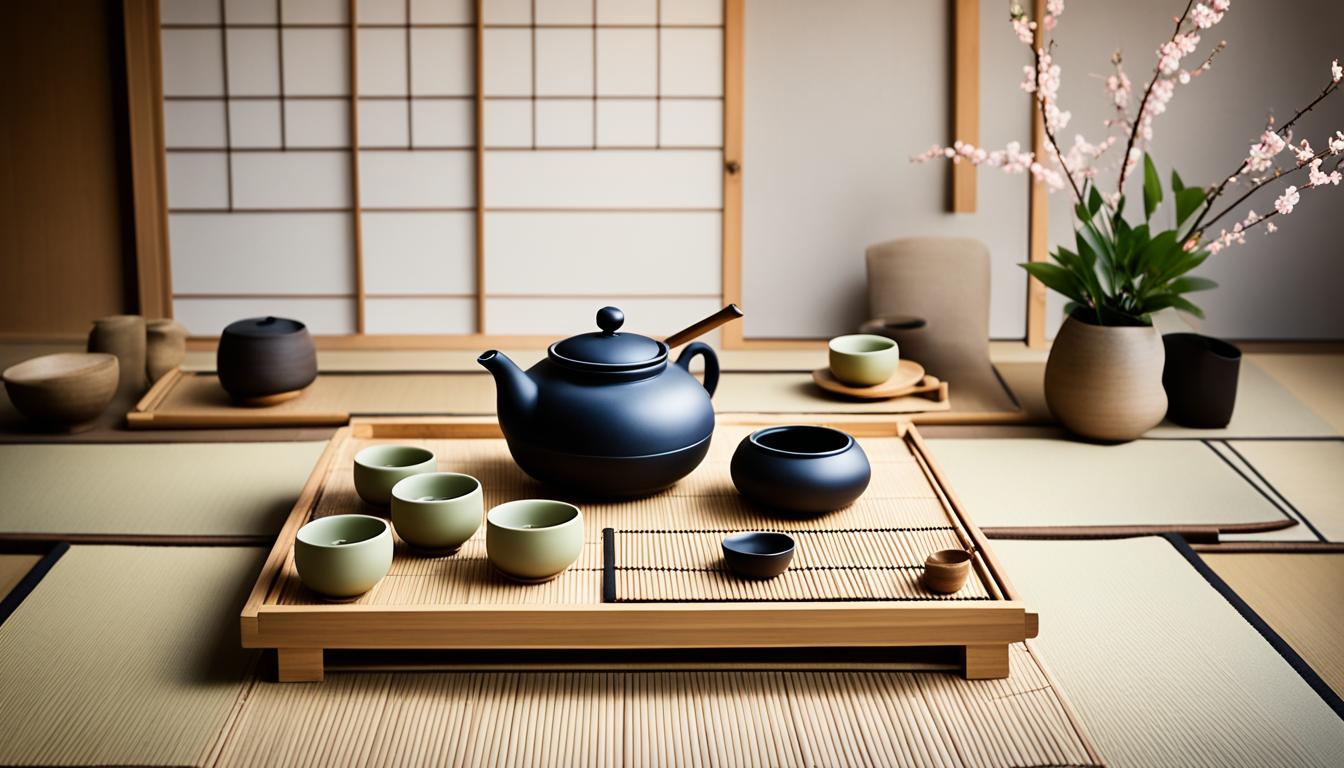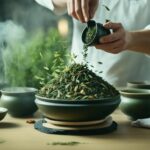The Japanese Tea Ceremony, known as Chado or Chanoyu, is a quintessential expression of harmony and respect, meticulously woven into the fabric of Japanese culture. This traditional ritual, extending beyond the act of simply imbibing tea, represents a spiritual journey where every gesture and element is imbued with profound meaning. Engage in this serene beauty that harmonizes the simple act of sharing tea with a philosophy of life honed over centuries. Imagine stepping away from the cacophony of daily life, entering a realm where time slows, senses heighten, and the heart aligns with a moment of peaceful reflection.
Capture the essence of this time-honored practice that is far more than a beverage experience – it’s a transformative encounter, exuding grace, etiquette, and a deep-rooted sense of community. As this ancient tradition unfolds, participants are invited into a world where every detail counts, and every movement is a dance of dignity and mindfulness. Envelop yourself in the age-old tenets of Japanese aesthetics, and discover the sublime interplay of art, nature, and humanity within the folds of the Japanese Tea Ceremony.
Key Takeaways
- The Japanese Tea Ceremony is a cultural symphony, epitomizing the ideals of harmony and respect.
- Every stage of the ceremony, influenced by Zen Buddhism, is charged with symbolism and ethics.
- This exquisite custom is an immersive experience that celebrates attention to detail and the beauty of the moment.
- The ceremony is an active meditation, fostering a sense of community and elevating human interactions.
- It’s not just a ritual but a living philosophy that enlightens the path to tranquility and understanding.
Understanding the Japanese Tea Ceremony
The Japanese Tea Ceremony, known as Chanoyu, Sado, or simply Ocha in Japanese culture, is much more than an event to enjoy matcha tea; it is a choreographed ritual that brings the principles of Zen Buddhism to life. The ceremony, which is steeped in tradition, invites participants into a world of mindfulness, where every action and every object has significance, and together they foster an environment of harmony and respect.
The History and Significance
Tracing its roots back to the 9th century, the Japanese Tea Ceremony has evolved through historical periods, each adding layers of depth to this cultural icon. Influenced by the teachings of Zen Buddhism, the tea ceremony reflects the Zen tenets of austerity and meditation. Its significance transcends the preparation and consumption of tea, turning the entire process into a meditative practice that underscores the interconnectedness of host and guest within the tapestry of Japanese culture.
Core Principles: Harmony, Respect, Purity, and Tranquility
The philosophical foundation of the tea ceremony lies within four principles. Harmony (wa), respect (kei), purity (sei), and tranquility (jaku), together form the ethical framework of this intricate cultural practice. In the careful cleaning of the tea utensils to the thoughtful serving of matcha tea, these values are meticulously incorporated, reflecting the spiritual essence and the pursuit of beauty in the everyday life, so cherished in traditional Japanese rituals.
Roles of the Host and Guests in the Ceremony
In the tea ceremony, the role of the host is to embody the principles of this tradition, ensuring a smooth choreography of movements that resonate with harmony and respect. The guests, in turn, reciprocate with gratitude and attentiveness, embracing the spirit of purity and tranquility. The interaction is a delicate dance, with every gesture from the folding of napkins to the sipping of matcha tea, encapsulating the profound cultural importance of this ceremonial practice.
The traditional preparation of matcha tea, the vibrant green tea powder, is central to the ceremony. Its preparation involves a series of elegant, deliberate gestures that culminate in the creation of a bowl of tea that’s both a work of art and an embodiment of the ceremony’s ethos. The use of matcha—not just any green tea—is a nod to its historical and cultural significance, its unique taste profile, and its place within the heart of Japanese culture.
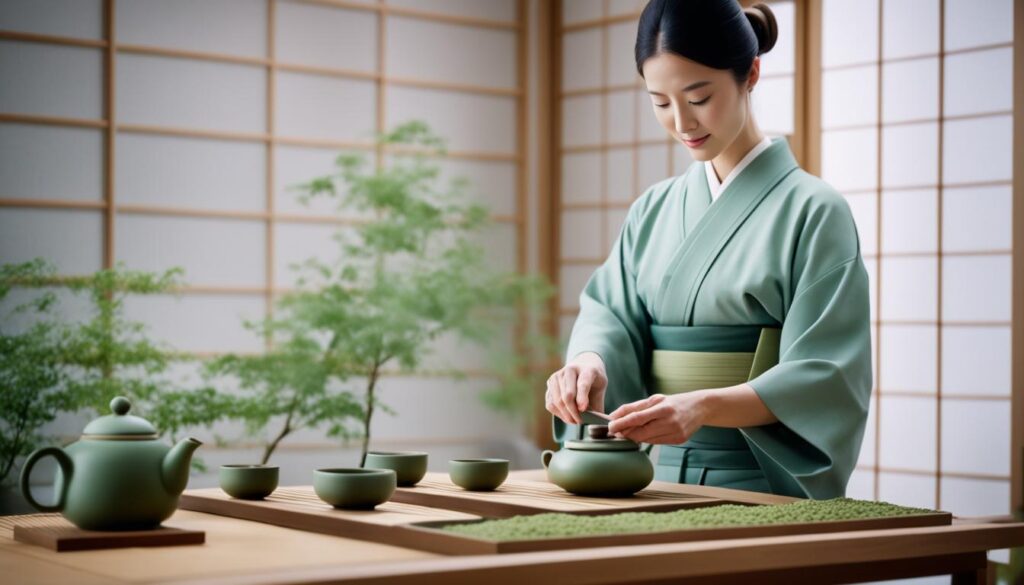
| Principle | Role in Ceremony | Expression in Practice |
|---|---|---|
| Harmony (wa) | Creating a cohesive atmosphere | Synchronization of guest and host movements |
| Respect (kei) | Acknowledging each participant’s role | Formal greetings and bows |
| Purity (sei) | Cleansing of space and utensils | Ritual purification before tea preparation |
| Tranquility (jaku) | Cultivating a serene environment | Quiet and calm setting conducive to meditation |
Japanese Tea Ceremony: A Ritual of Harmony, Respect, and Purity
The Japanese Tea Ceremony, or ‘Chado’, serves as much more than a cultural exhibition of sipping tea; it is a spiritual and philosophical pathway to achieving harmony, respect, and purity. This ceremonial journey unfolds in the aesthetics of a meticulously choreographed dance, where every gesture signifies a deeper meaning, and every element is a testament to the enduring legacy of traditional rituals in Japanese society.
As we delve deeper into the very fabric of this ancient tradition, the tea ceremony emerges not as an isolated activity, but rather as a mirror reflecting the core values of Japanese culture. Here, we explore how the principles integral to the tea ceremony extend far beyond its confines and influence social conduct and personal ethics in Japan.
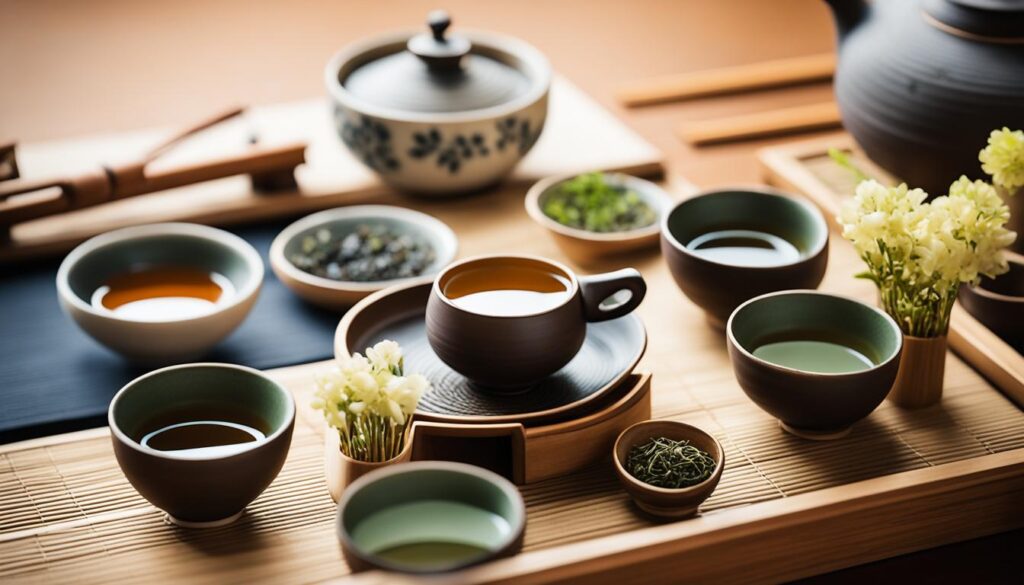
“In every sip of tea, one finds the essence of purity; in every shared silence, the resonance of respect; and in the gathering of spirits, a celebration of harmony.”
Let us consider the deeper symbolism tucked within the tea ceremony’s folds, elucidating its transcendent impact on mindsets and lifestyles:
- Harmony: Within the tea room, a world governed by ‘wa’, every element is a deliberate choice aimed at creating a tranquil ambiance. The architecture, the garden view, even the scroll on the wall—each plays its part in harmonizing nature with human craft.
- Respect: ‘Kei’ is expressed through interactions, where each participant honors the others with their attention and esteem, regardless of social standing outside the tea room. It serves as a reminder of the egalitarian spirit that lies at the heart of this practice.
- Purity: The ritual cleansing of utensils, known as ‘sei’, is not merely physical but symbolic of an inner purification, encouraging participants to shed worldly concerns and attain a state of mental clarity before engaging in the ceremony.
This profound experience does more than appeal to the senses; it ushers participants into a meditative state where the ritual becomes a conduit for philosophical reflection. In essence, the Japanese Tea Ceremony encapsulates a holistic approach to life, where every action is mindful and every silence, a language of the soul.
| Principle | Expression in the Ceremony | Impact on Japanese Culture |
|---|---|---|
| Harmony (和) | Carefully designed tea space and balance between components | Fosters a society attentive to aesthetic balance and environmental integration |
| Respect (敬) | Courteous interactions, humility, and a non-hierarchical assembly | Encourages mutual respect and mindful communication in social dealings |
| Purity (清) | Cleansing rituals and emphasizes cleanliness | Advocates for purity of mind and space, extending to various life aspects |
In conclusion, it is clear that the Japanese Tea Ceremony is far more than an art form; it is a living philosophy. As the tea whisk gently stirs the matcha and nature whispers through the shoji screens, participants find themselves woven into a tapestry of timeless principles: harmony, respect, and purity.
Conclusion
As we contemplate the rich tapestry of the Japanese Tea Ceremony, we recognize its more than just a cultural artifact; it’s a living philosophy that continues to echo through the corridors of modern society. This transcendent ritual, embodying harmony, respect, and purity, is not merely contained within the walls of traditional tea rooms. Instead, it seeps into the very fabric of contemporary life, resonating with a world increasingly attuned to the principles of mindfulness and communal respect drawn from Zen Buddhism. The tea ceremony, a jewel of Japanese culture, offers a silent narrative on living with intention and poise amidst the cacophony of today’s pace.
The Cultural Impact of the Tea Ceremony on Modern Society
In society’s sprint towards the future, the values upheld by the tea ceremony serve as a grounding force, reminding us of the importance of serenity and thoughtful interaction. The ceremony’s influence stretches beyond Japan, as people around the globe seek ways to incorporate its ethos into their own cultural milieus. Rituals inspired by the tea ceremony have found their way into various practices, advocating for a mindful connection with others and with the tasks at hand. This underscores not just a trend but a burgeoning appreciation for traditions that underscore communal harmony and respect.
Practicing the Values of the Tea Ceremony in Daily Life
The tenets of the Japanese Tea Ceremony are a recipe for personal cultivation and societal benevolence. By inviting these principles into our daily routines, we foster an environment that cherishes the purity in our actions and intentions. Whether it’s through conscientious interactions with others, deliberate and respectful engagement with our surroundings, or simply allowing ourselves moments of reflection, we weave the spirit of the tea ceremony through the fabric of our existence. The embodiment of these rituals in our lives is an aspiration towards not merely a respectful society but a profoundly interconnected human experience.
FAQ
What is the Japanese Tea Ceremony?
The Japanese Tea Ceremony, also known as the Way of Tea, is a traditional ritual influenced by Zen Buddhism involving the ceremonial preparation and presentation of matcha tea. It embodies harmony, respect, purity, and tranquility and is a profound cultural experience that goes beyond simply drinking tea.
How does the Japanese Tea Ceremony reflect Japanese culture?
The ceremony is a microcosm of Japanese culture, mirroring its values and principles. It integrates the importance of harmony in social interactions, respect for others, purity of the spirit, and tranquility of the mind. It highlights the aesthetics and ethics deeply rooted in Japanese history and daily life.
What are the core principles of the Japanese Tea Ceremony?
The core principles of the ceremony are harmony (wa), respect (kei), purity (sei), and tranquility (jaku). These principles guide the conduct and atmosphere of the ceremony, ensuring a peaceful and respectful environment that fosters a mindful and introspective experience.
Why is matcha tea used in the Japanese Tea Ceremony?
Matcha tea is chosen for its historical significance and method of preparation, which aligns with the objectives of the ceremony. The preparation of matcha involves a series of precise movements and gestures that complement the meditative and deliberate nature of the ritual, and its vibrant color and taste are considered to evoke the very essence of nature itself.
Can anyone participate in a Japanese Tea Ceremony?
Yes, anyone interested in experiencing the ceremony can participate. While traditionally, those participating in a tea ceremony would be versed in its etiquette, many tea schools and cultural centers offer demonstrations and classes for novices to appreciate and learn about this profound cultural practice.
How has the Japanese Tea Ceremony influenced modern society?
The Japanese Tea Ceremony has had a subtle yet profound influence on modern society. It has fostered a global appreciation for mindfulness, the art of hosting, and the quest for peace in social interactions. Moreover, it has inspired many to seek balance and harmony in the fast-paced modern world, encouraging practices that contribute to mental and spiritual well-being.
What role does Zen Buddhism play in the Japanese Tea Ceremony?
Zen Buddhism plays a pivotal role in shaping the ethos of the tea ceremony. Its principles promote the quietude of mind, simplicity in acts, mindfulness, and living in the moment—all of which are embedded within the practices, tools, and very spirit of the tea ceremony.
How can one incorporate the values of the Japanese Tea Ceremony into daily life?
The values of harmony, respect, and purity can be integrated into daily life through mindful practices such as being fully present in conversations, showing gratitude and consideration for others, maintaining a tidy and serene environment, and approaching tasks and relationships with a genuine and pure intention.
